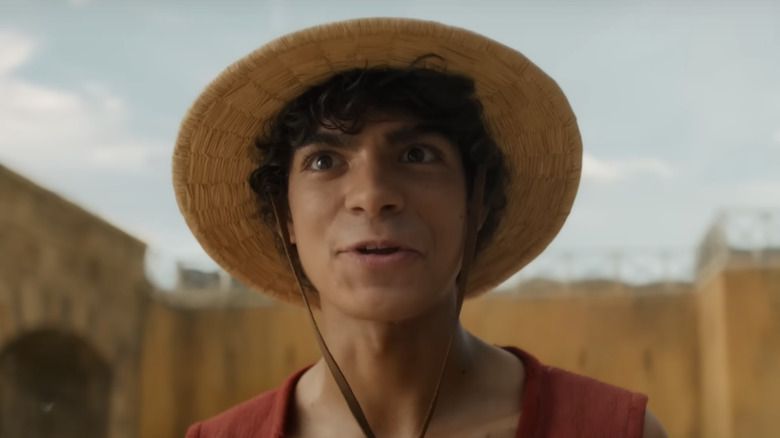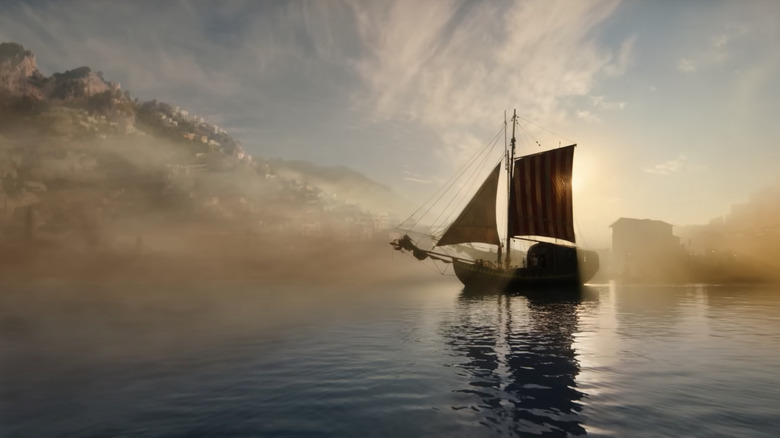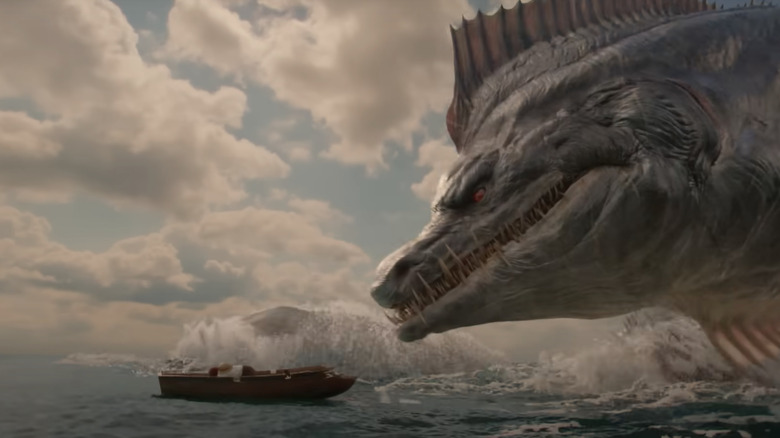One Piece: What Exactly Is The 'Grand Line' And Why Is It So Important?
The first trailer for Netflix's "One Piece" is finally here, giving fans across the world their first glimpse at the live-action adaptation of Eiichiro Oda's prolific manga and anime series of the same name. The trailer introduces viewers to several "One Piece" characters, like Monkey D. Luffy (Iñaki Godoy), Roronoa Zoro (Mackenyu), Nami (Emily Rudd), and Sanji (Taz Skylar), as well as their ship, the Going Merry.
More importantly, the trailer provides some exposition for the Straw Hat Pirates' first adventure, with Luffy telling the audience that he's heading to the Grand Line. While anime and manga fans know this name by heart, for newcomers, it's important to clarify that the Grand Line is not one specific location; it's a massive oceanic route that circles the entire world of "One Piece." The route is a famous destination for pirates and adventurers, as it's rumored that the last island on the Grand Line is where the pirate Gol D. Roger hid his famous treasure, the titular One Piece.
The Grand Line is notoriously difficult to sail due to its abundance of strange phenomena, dangerous travelers, and natural obstacles. On top of this, normal compasses fail to work within this sea route. Anybody hoping to navigate the Grand Line must use a special device called a Log Pose to journey from island to island, hoping to eventually reach the fabled final island at the end of the route.
The Grand Line is extremely important to the geography of One Piece
The geography of "One Piece" is notoriously tricky, since the world is covered by a massive body of water known as the Blue Sea that is said to encompass over two million islands. Thankfully, the Grand Line helps to separate the world into four distinct oceans.
"One Piece" fans know that the Grand Line is cut in half by the Red Line, which — like the Grand Line — encircles the entire planet. In doing so it separates the Grand Line into a first half called "Paradise" and a second half called the "New World," the latter being far more dangerous and unpredictable than the already daunting Paradise.
The Grand Line and the Red Line form an "X" that divides the Blue Sea into four distinct regions — the North Blue, South Blue, East Blue, and West Blue. The West and North Blues are located outside the New World, and the South and East Blues are located outside of Paradise.
Each of these Blue Oceans are separated from the Grand Line by the Calm Belts that border the world-encircling route on either side. These are calm, windless seas that make it nearly impossible to travel from one of the Blues into the line.
The Grand Line is the primary setting for the majority of One Piece
It's a tremendous undertaking just to get onto the Grand Line and practically impossible to ever traverse its treacherous waters to the very end, which means Netflix's "One Piece" is just getting started with the story of Monkey D. Luffy and the Straw Hat Pirates. Because Luffy's ultimate goal is to track down Gol D. Roger's mythical treasure, his fate and the story of "One Piece" itself are directly linked to the Grand Line.
As such, nearly the entire story of "One Piece" takes place within the Grand Line. In both the anime and the manga, nearly every story arc after the East Blue Saga has taken place inside the Grand Line or on one of its countless islands.
Although the non-Grand Line episodes make up a dramatically small portion of the series, it's worth noting that the East Blue Saga takes up 61 episodes within the anime and 100 chapters of the manga, meaning it will likely be a long time before fans see Netflix's live-action series reach this legendary oceanic route. Regardless of how long it takes for the Straw Hats to reach the Grand Line, it's important for new viewers to understand the significance of this path.


